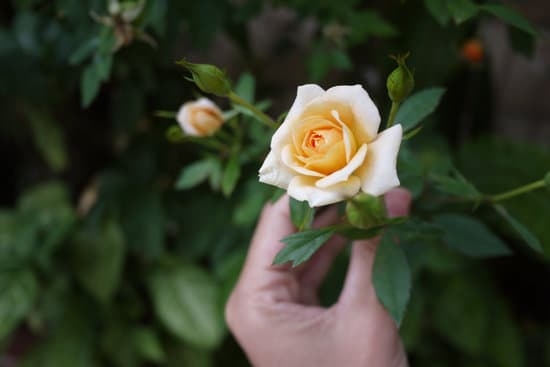Urban gardening ideas for city-dwelling plant lovers offer an innovative way to bring greenery into urban spaces. In the hustle and bustle of city life, cultivating a garden can provide solace and relaxation, while also contributing to a more sustainable lifestyle. Urban gardening not only allows individuals to connect with nature but also helps improve air quality, reduce stress levels, and promote biodiversity in cities.
For city-dwellers looking to embark on their gardening journey, navigating through limited space can be a challenge. However, with the right tips and techniques, it is possible to create beautiful green spaces even in the midst of skyscrapers and concrete jungles. From vertical gardening to balcony gardens and indoor plant arrangements, there are numerous creative ways to incorporate plants into urban living environments.
Whether you live in an apartment with a small balcony or a high-rise condo with limited outdoor space, urban gardening offers endless possibilities for creating vibrant and sustainable gardens. By exploring different plant options, design ideas, and eco-friendly practices tailored to urban settings, plant lovers can transform their living spaces into lush oases that not only enhance their surroundings but also contribute positively to the environment.
Choosing the Right Plants for Urban Spaces
When it comes to urban gardening, choosing the right plants for small spaces is crucial for ensuring a successful and thriving garden. City-dwelling plant lovers often have limited space to work with, whether it’s a small balcony, rooftop, or even just a windowsill.
Fortunately, there are plenty of plant options that are well-suited for urban environments. Succulents, herbs, and dwarf varieties of fruits and vegetables are great choices for small-space gardening due to their compact size and low maintenance requirements.
For those looking to add some greenery to their urban space without taking up too much room, consider vertical gardening techniques. Vertical gardens utilize walls, fences, or other vertical structures to grow plants in a space-saving manner. Options like wall-mounted planters, trellises, and hanging baskets are popular choices for vertical gardening in the city. This technique not only maximizes space but also adds visual interest and dimension to your urban garden.
Additionally, when selecting plants for your urban space, consider the amount of sunlight the area receives throughout the day. Be mindful of any shade created by buildings or other structures that may affect plant growth.
Opt for plants that thrive in low light conditions if your space is shaded, or choose sun-loving plants if you have direct sunlight exposure. By carefully choosing the right plants based on your specific urban environment and available space, you can create a beautiful and lush garden oasis even in the heart of the city.
Vertical Gardening Techniques for Maximizing Space in the City
Utilizing Vertical Structures
One of the most efficient ways to maximize space in a city setting is by utilizing vertical structures for gardening. Installing wall-mounted planters, hanging baskets, or trellises can help create a green oasis in minimal square footage. By going vertical, you can grow a variety of plants such as herbs, flowers, and even vegetables without taking up valuable floor space.
Vertical Garden Design Ideas
When implementing vertical gardening techniques in your urban space, consider incorporating design elements that not only optimize space but also enhance the aesthetic appeal of your garden. Mix and match different plant varieties to create a lush and vibrant display. Additionally, think about adding functional elements like shelving units or repurposed pallets to create a tiered effect that adds visual interest to your vertical garden.
DIY Vertical Gardening Projects
For city-dwelling plant lovers looking to get creative with their urban gardening efforts, there are plenty of DIY vertical gardening projects to explore. From creating a living wall with succulents or air plants to constructing a vertical hydroponic system for growing leafy greens indoors, the possibilities are endless. Embrace your green thumb and unleash your creativity by incorporating personalized touches into your vertical garden design.
Creating a DIY Balcony Garden
One of the most creative and practical urban gardening ideas for city-dwelling plant lovers is to create a DIY balcony garden. Apartment dwellers often lack a traditional backyard or garden space, but balconies offer a fantastic opportunity to bring greenery into your living space. With some thoughtful planning and a bit of creativity, you can transform your balcony into a lush oasis that adds beauty and serenity to your urban home.
When designing your DIY balcony garden, consider the size and layout of your outdoor space. Look for compact planters, vertical gardening solutions, and hanging baskets that will maximize the use of limited space. Consider the amount of sunlight your balcony receives throughout the day and choose plants that thrive in those conditions. Additionally, think about adding elements like cozy seating, decorative lighting, or water features to enhance the ambiance of your balcony garden.
Some popular plants for balcony gardens include herbs like basil, mint, and rosemary; flowering plants such as petunias, geraniums, and pansies; and compact vegetables like cherry tomatoes, peppers, and lettuces. Incorporating a variety of textures, colors, and fragrances will create visual interest in your DIY balcony garden. Remember to regularly water your plants, provide adequate drainage for excess moisture, and fertilize them as needed to ensure healthy growth and blooming throughout the season.
| Plant Suggestions | Benefits |
|---|---|
| Herbs (basil, mint) | Compact size; culinary use |
| Flowering Plants (petunias, geraniums) | Add color and fragrance; low maintenance |
| Compact Vegetables (cherry tomatoes) | Fresh produce in small spaces |
Indoor Gardening Solutions for Plant Lovers With Limited Outdoor Space
Indoor gardening has become a popular trend among city-dwelling plant lovers who may not have access to outdoor spaces for traditional gardening. With the right techniques and creativity, it is possible to bring the beauty of nature indoors and create a thriving indoor garden. From herbs and succulents to small fruit trees, there are plenty of options for cultivating a green oasis within the confines of an urban apartment or home.
Choosing the Right Plants for Indoor Gardening
When selecting plants for indoor gardening, it’s important to consider factors such as sunlight exposure, humidity levels, and space constraints. Opt for low-maintenance plants like pothos, snake plants, and spider plants that can thrive in various lighting conditions.
Herb gardens are also a popular choice for indoor spaces since they can be easily grown on windowsills or kitchen counters. For those with limited natural light, consider investing in grow lights to ensure that your plants receive the necessary light to flourish.
Creative Indoor Garden Designs
Maximize your indoor gardening space by getting creative with your design layout. Utilize hanging planters, wall-mounted pots, and tiered plant stands to add depth and dimension to your indoor garden. Consider grouping plants with similar care requirements together to make watering and maintenance more manageable. Additionally, incorporating elements like decorative pots, shelves, and trellises can add visual interest to your indoor garden while also optimizing space usage.
Tips for Indoor Gardening Success
To ensure the success of your indoor garden, be mindful of proper watering schedules and drainage for your plants. Use well-draining soil mixes specifically formulated for indoor plants to prevent waterlogging roots. Regularly monitor humidity levels in your home using a hygrometer and provide adequate ventilation to prevent mold or mildew growth. Remember to occasionally rotate your plants to ensure even growth patterns and prevent leaning towards one side due to uneven light exposure.
Stylish and Functional Urban Garden Design Ideas for Modern City Homes
Urban gardening has become increasingly popular among city-dwelling plant lovers, offering a myriad of benefits for those looking to bring nature into their urban spaces. When it comes to designing an urban garden in modern city homes, there are various stylish and functional ideas to consider.
One innovative approach is the use of vertical gardening techniques, which maximize space by growing plants upwards rather than outwards. This method is perfect for small balconies or patios where floor space is limited but there are plenty of vertical surfaces to utilize.
In addition to vertical gardening, incorporating elements such as hanging planters, trellises, and wall-mounted containers can add a touch of greenery to even the smallest of urban spaces. These design ideas not only enhance the aesthetics of the home but also promote a sense of tranquility and well-being in an otherwise bustling city environment.
Another creative urban gardening idea is to embrace a mix of edible plants and ornamental flowers in your garden design. This not only adds beauty to your space but also provides you with fresh herbs, fruits, and vegetables right at your fingertips.
For a more contemporary look in urban garden design, consider incorporating sleek planters, modern furniture, and minimalist landscaping elements. Focus on creating a cohesive outdoor oasis that seamlessly blends with the interior decor of your modern city home. Additionally, incorporating sustainable practices such as water conservation techniques, composting bins, and using eco-friendly materials in your garden design can help reduce your environmental impact while adding functionality and style to your urban garden.
| Urban Gardening Idea | Benefits |
|---|---|
| Vertical gardening techniques | Maximizes space utilization |
| Mixing edible plants with ornamental flowers | Provides fresh produce while enhancing aesthetics |
| Sustainable practices in garden design | Reduces environmental impact and adds functionality |
Sustainable Gardening Practices for Urban Environments
Urban gardening in urban environments not only serves as a way to reconnect with nature but can also have a positive impact on the environment when done sustainably. Here are some tips for eco-friendly plant lovers looking to practice sustainable gardening in the city:
- Compost organic waste: Instead of throwing away kitchen scraps and yard trimmings, start composting them to create nutrient-rich soil for your plants. You can use a compost bin or pile to recycle organic materials and reduce waste sent to landfills.
- Conserve water: In urban areas where water may be limited, it’s essential to practice water conservation in your garden. Consider installing a rain barrel to collect rainwater for watering your plants or opt for drought-tolerant species that require less water.
- Use natural pest control methods: Avoid using chemical pesticides that can harm beneficial insects and pollinators. Instead, try natural pest control methods such as companion planting, introducing beneficial insects, or using homemade insecticidal soaps.
Implementing these sustainable gardening practices can help urban gardeners minimize their environmental impact while promoting a thriving green space in the city. By making small changes in your gardening routine, you can contribute to creating a more eco-friendly urban environment while enjoying the beauty of nature right at your doorstep. Remember, every little effort counts when it comes to sustainable gardening in urban spaces.
Community Gardening Initiatives in Cities
Here are some ways to get involved in community gardening initiatives in cities:
- Join a local community garden: Many cities have community gardens where residents can rent plots of land to grow their own fruits, vegetables, flowers, and herbs. This is a great way to get your hands dirty, learn from experienced gardeners, and enjoy the benefits of fresh produce grown right in your neighborhood.
- Volunteer at urban farms: Urban farms are becoming increasingly popular in many cities as a means of promoting sustainable agriculture and providing fresh food to underserved communities. By volunteering at an urban farm, you can help with planting, weeding, harvesting, and other tasks while supporting local food systems.
- Attend gardening workshops and events: Many cities host gardening workshops, classes, and events where you can learn new techniques, exchange ideas with fellow gardeners, and connect with experts in the field. These opportunities are not only educational but also provide a sense of community and belonging.
By getting involved in community gardening initiatives in cities, plant lovers can make a meaningful difference in their neighborhoods, promote environmental sustainability, and foster a sense of camaraderie among residents who share a common interest in gardening and green living. So why not roll up your sleeves, grab your trowel, and join the growing movement of urban gardeners who are transforming city spaces into vibrant oases of nature?
Conclusion
In conclusion, urban gardening offers a myriad of benefits for those city-dwelling plant lovers seeking to bring nature into their everyday lives. From improved mental well-being to contributing to a sustainable environment, cultivating an urban garden can truly enhance the quality of life in urban settings. By choosing the right plants for small spaces, utilizing vertical gardening techniques, creating DIY balcony gardens, and exploring indoor gardening solutions, city residents can easily transform their living spaces into green oases.
Moreover, embracing stylish and functional urban garden designs can further elevate the aesthetic appeal of modern city homes while providing a calming escape from the hustle and bustle of urban life. Additionally, incorporating sustainable gardening practices not only benefits the environment but also fosters a deeper connection with nature. Whether through composting, water conservation methods, or utilizing eco-friendly products, urban gardeners can make a positive impact on their local community while enjoying their green spaces.
Furthermore, participating in community gardening initiatives allows city dwellers to connect with like-minded individuals, share knowledge and resources, and contribute to the overall well-being of their neighborhoods. By getting involved in communal projects or starting one’s own initiative, plant lovers can truly make a difference in creating greener and healthier urban environments.
In essence, by embracing the urban garden lifestyle as a city-dwelling plant lover, individuals can enrich their lives while cultivating beauty and sustainability within their communities.
Frequently Asked Questions
What Plants Are Best for Urban Gardening?
Plants that are best for urban gardening are typically those that thrive in limited space and can adapt to growing in containers or small raised beds. Herbs like basil, mint, and parsley, as well as vegetables like cherry tomatoes, lettuce, and peppers are popular choices for urban gardens due to their compact size and ease of care.
How Do You Grow a City Garden?
Growing a city garden requires careful consideration of the available space, sunlight exposure, and soil quality. Utilizing vertical gardening techniques such as trellises or hanging pots can maximize space in small urban environments. It’s also important to regularly water and fertilize plants, as urban settings can be harsher than traditional garden spaces.
What Is an Urban Community Garden?
An urban community garden is a shared green space within a city where residents come together to grow fruits, vegetables, flowers, or herbs collectively. These gardens not only provide fresh produce for participants but also foster a sense of community and connection among neighbors. Urban community gardens often promote sustainability, education about gardening practices, and healthy living within cities.

Welcome to my gardening blog! I am passionate about plants and enjoy sharing my knowledge and experiences with others. In this blog, I will write about everything related to gardening, from tips on how to get started to updates on my own garden projects.





